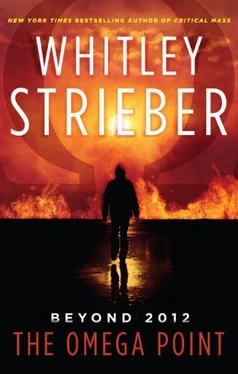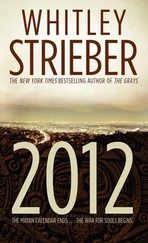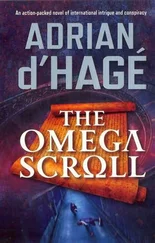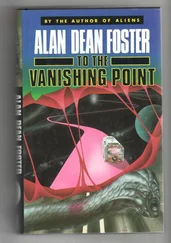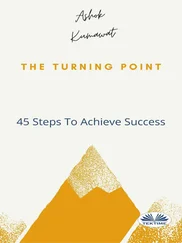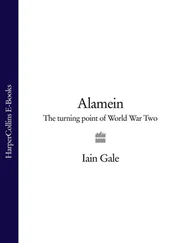In the February 28, 2009, issue of The New Scientist, it was suggested that a 4-degree Centigrade rise in planetary temperatures is likely by the end of the century, with the result that huge areas of Earth, including much of the United States, Africa, India, the Middle East, and most of the Amazon, are going to become much too dry to sustain the populations that now live in those areas. According to James Lovelock, the author of The Gaia Hypothesis, the situation is likely to lead to something approaching a 95 percent reduction in the human population of Earth, and, given present worldwide temperature changes, the predicted increase is probably already inevitable. In addition, as ocean currents slow, there could be serious and unpredictable shorter-term weather events, such as ferocious storms and, as the temperature of the planet becomes more even, the slowing and eventual stopping of essential air circulation.
Were air circulation to stop, dozens of cities across the planet would become unlivable in a matter of weeks.
Obviously, this is a horrific prognosis for the future of man, but there is a different way of looking at it, and in The Omega Point , the journey of David Ford, Caroline Light, and the class expresses the importance of ways of thinking that are completely new, and bear no reference to the entire system of values and way of life that have led us to the peril in which we now find ourselves.
The first signs of human industrial activity on Earth become visible during the middle centuries of the Roman Empire, when residue from smelting activities in Britain and Spain was deposited on glaciers in Greenland.
This is also when there was a fundamental change in the way human beings conceived of their lives. For the first time, material well-being became more important to a large social class that also became divorced from spiritual awareness. Previously, material opulence had been part of the ritual presence of leaderships that were both temporal and spiritual. During the great Roman peace, however, there came into being a class of people who were more or less irreligious, and whose interests focused primarily on material wealth. This secular class was focused on material consumption and longevity, not on preparing for an afterlife in which they no longer had any belief. And the more devoted to the material world they became, the less real the soul seemed to them.
After Rome collapsed, the Western world returned to theocracy, but it was not a healthy theocracy. Christ taught the triumph of resurrection, but in A.D. 325, the Council of Nicaea changed the focus of the church from joy at Christ’s triumph over death to guilt at our—probably entirely fictional—birth into sin. Prior to Nicaea, Christ had often been portrayed as carrying a magician’s wand that promised new life. Now, he was portrayed as suffering on a cross that was our fault.
This change was made for political reasons, because guilty people can be controlled by those who claim the power of forgiveness. As a result Christianity sank into the long trance of guilt and retribution from which it is just beginning to emerge.
Growing wealth in the fifteenth century caused the reemergence of a secular community, followed by a revolt against the oppression of the church. This, in turn, led to a second and more formidable rise of materialism. And now we are at the climax of material civilization. Most of us are either soul blind or passive to the idea that our lives may matter in some larger way. Most of us live to live, and struggle against death as if it was an absolute and final end, whether we have cherished beliefs about an afterlife or not. We have, in short, gone soul blind, which is another of the core themes of the book.
Largely because of extraordinary, unstoppable population growth, we find ourselves in a situation where only the most heroic efforts, probably already beyond both our capacity and our will, would enable the planet to continue to sustain us.
We are almost exactly in the place anyone watching the stately movement of the Zodiac would expect us to be, and whether anything unusual happens precisely on December 21, 2012, or not, the Mayan Long Count calendar has also been uncannily accurate in predicting vast change during this period.
It is strange enough that these calendars even exist, but far stranger is the fact that they are in any way at all accurate. Even stranger is the fact that there exists knowledge of a great plan of some sort concealed in the Bible.
If modern perceptions of the human past did not make it seem impossible, there would be no question but that people in earlier times possessed deeper understanding of the human situation than we do, and recorded their understanding in long count calendars that can have no purpose other than to mark great cycles of life that are hidden to the modern mind.
In fact, somebody in the past did understand. The Maya understood. The creators of the Zodiac understood. The authors of the Bible understood. But we no longer understand.
But what did they understand, and why did they understand it? Is it possible that they had skills that we no longer possess, such as the skill that is recovered by Herbert Acton and Bartholomew Light in the book, in the jungles of Guatemala?
This gets us to one of the central elements in the story: white powder gold. The existence of this substance was first brought to my attention by an old friend, Laurence Gardner, in his book Lost Secrets of the Sacred Ark, which basically asks the question, was the Ark of the Covenant an artifact of an ancient science now lost, and, if so, does it have any relevance now?
Gardner describes a substance the Egyptians called mfkzt and the Hebrews shem. It was believed to confer great powers of concentration and physical health, and to enable users to enter the world of the gods and confer with these higher powers. It is depicted in reliefs as a conical white substance, and was apparently created under extremely high heat. A quantity of it was unearthed at a dig on Mount Horeb in the Sinai peninsula by Sir Flinders Petrie in 1904.
Sir Flinders found this substance while excavating the only Egyptian temple ever found outside Egypt. In the 270-foot-long temple he discovered a metallurgist’s workshop, and hieroglyphs indicating that the site had been in active use for fifteen hundred years, up to the reign of Akhenaton in 1350 B.C. Most of what Petrie found of the white substance was abandoned at the site and blew away, and both the sample he returned to England and his notes have been lost.
The actual formula for this substance remains lost to history, but it may have been accidentally rediscovered by a farmer called David Hudson while he was attempting to restore some land to arability in Arizona. He was a wealthy and politically conservative man, and had no interest in or awareness of ancient alchemical formulations. The soil was full of salt, so he was using sulfuric acid on it when he noticed that black and red material was appearing in the soil that he could not identify. When it dried, it exploded with a silent flash and disappeared, taking the paper on which he had put it with it.
Naturally, he was intrigued. He soon discovered that the flash did not cause a change of air pressure. So it was a release of light, not an explosion. After crucible reduction, he was left with beads of gold and silver that shattered like glass. But there is no alloy of these elements that is that brittle. So what did he have?
By heating, he eventually created a substance that was a white powder, which was 56 percent lighter than the original material. This could be explained by the material partly volatizing away, but when he heated it to the point that it fused into the glass container where it was being tested, all of its weight returned.
Читать дальше
